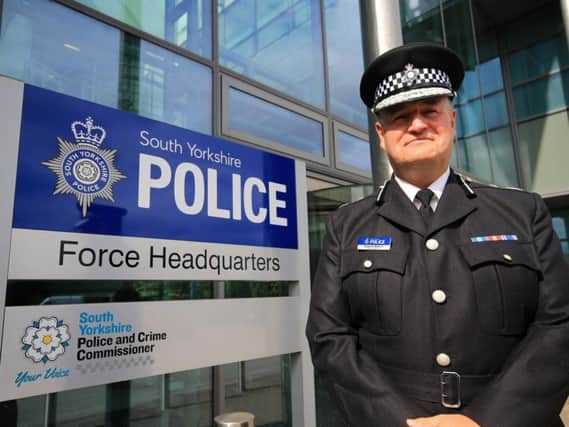Yorkshire chief constable resets old fashioned uniform standards as he claims 'I like police to look like police'


Although the distinctive tall helmets were never officially phased out they fell out of normal use in the county, but Chief Constable Stephen Watson said: “I like police to look like police.”
That means tall hats for male officers on walking duties, bowlers for their female colleagues and flat caps for those using vehicles.
Advertisement
Hide AdAdvertisement
Hide AdAlthough officers will still wear the practical uniform for everyday duties they are also being re-issued with white shirts and the ‘number one’ uniform with tunics, more familiar from an earlier era.
Those will be available for duties when officers are expected to look smart, such as at court or public events.
The new guidance on headgear also helps to differentiate police officers from their PCSO colleagues, who will keep their regular uniform.
Mr Watson said: “It is about resetting old fashioned standards. I like police to look like police. We are increasingly seeing people smarten themselves up; the cops love it.
Advertisement
Hide AdAdvertisement
Hide Ad“You give people the kit to look smart and professional and they will.
“PCSOs wear flat caps. We had got to the point where people were not wearing hats. We have re-issued hats and number one uniforms. They wear the working rig people see them in, practical work wear, but we have re-issued white shirts so when officers go to formal events they can put on a number one uniform and look like smart British bobbies.”
The new uniforms policy is part of Mr Watson’s work to revitalise the force, which has been going on since he took over to address a series of failings.
That work has included the popular and successful re-introduction of neighbourhood policing as well as putting CID teams back into local areas and bringing the force’s mounted section back into the county rather than sharing stables in West Yorkshire.
Advertisement
Hide AdAdvertisement
Hide Ad“We have pushed basic standards on the ground,” he said, “Which comes from good local leadership. If you do the basics well, everything else tends to follow.”
The change in focus comes as the force enters a major phase of recruiting, increasing numbers for the first time in almost a decade with around 20 recruits expected to begin training every month.
Mr Watson said that shifting balance was “possibly a nice problem to have” as the force expands, with 55 extra officers already due to be recruited this year and around 70 additional posts to be created in future to replace PCSOs as numbers of those staff fall in the next two to three years.